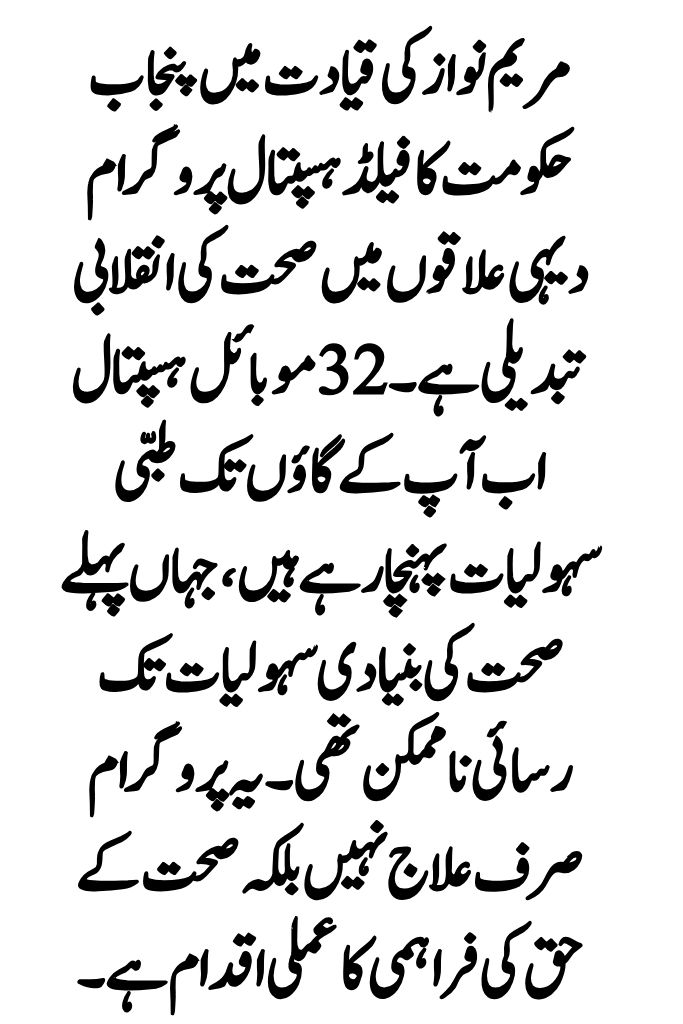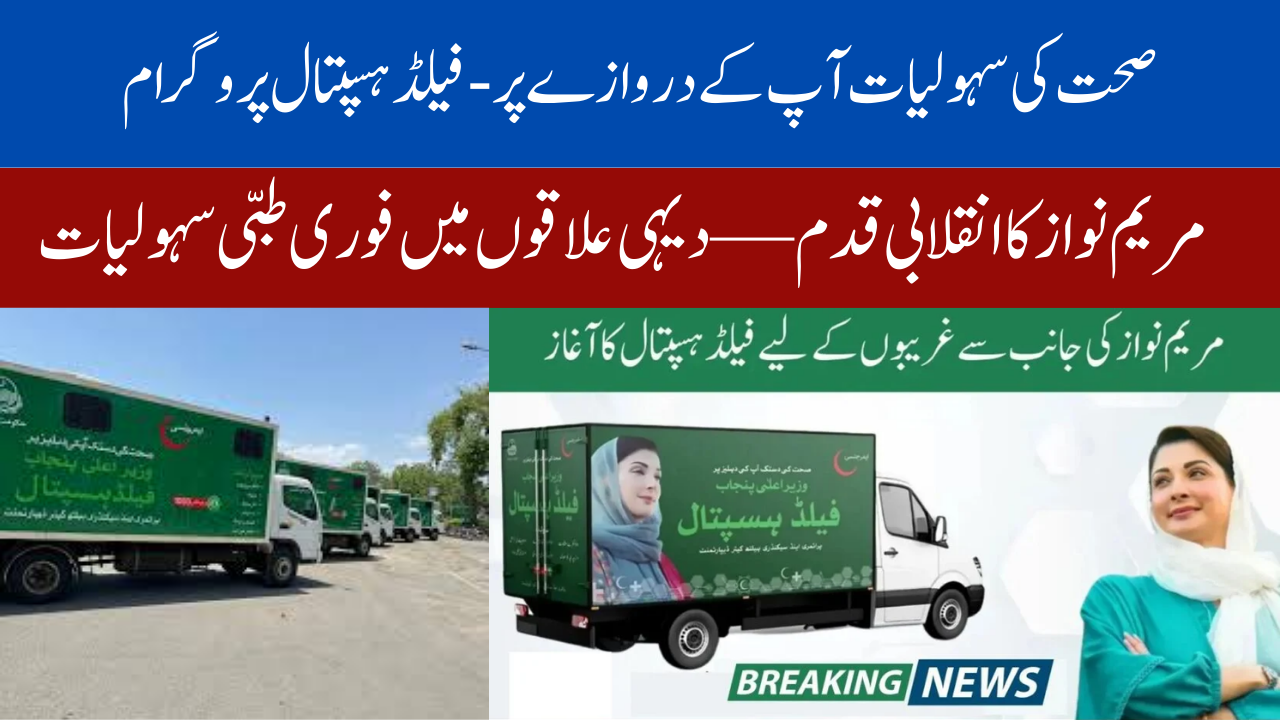In a groundbreaking initiative to transform healthcare accessibility in rural Punjab, Chief Minister Maryam Nawaz has launched the innovative ‘Field Hospital’ program. This strategic healthcare solution aims to bridge the significant medical service gap between urban and rural communities through mobile healthcare facilities. Deployed across Punjab’s 36 districts, this program represents a paradigm shift in how healthcare services reach underserved populations.

Revolutionizing Rural Healthcare Through Mobile Facilities
The Field Hospital program utilizes a network of 32 field hospitals strategically distributed throughout Punjab province. These mobile medical units bring essential healthcare services directly to communities that previously lacked access to adequate medical facilities. By converting containers into fully-equipped hospitals, the program demonstrates an innovative approach to healthcare delivery that prioritizes accessibility and efficiency.
ALSO READ:Punjab Green Revolution: Solar E-Charging, E-Taxis, and Bullet Train Plans
The Mobile Healthcare Network Structure
The program operates through an integrated system of:
- 21 specialized mobile healthcare units delivering direct patient care
- 11 dedicated investigation units providing diagnostic services
- Complementary “Clinic on Wheels” services enhancing overall coverage
This comprehensive approach ensures that even the most remote communities can access quality healthcare without the burden of long-distance travel to urban medical centers.
Key Program Features and Services at a Glance
| Feature | Details |
|---|---|
| Total Field Hospitals | 32 units |
| Mobile Healthcare Units | 21 specialized units |
| Investigation Units | 11 diagnostic facilities |
| Target Areas | 36 Punjab districts including Katchi Abadis |
| Implementation Timeframe | Completed in just six weeks |
| Operating Hours | 24/7 with real-time monitoring dashboard |
| Cancer Treatment Funding | Increased from 2 billion to 6 billion rupees |
Core Healthcare Services Provided
The Field Hospital program delivers a comprehensive range of healthcare services rarely accessible in rural settings:
- Diagnostic Services: Laboratory testing, ultrasound examinations, ECG readings, and X-ray capabilities
- Pharmaceutical Access: Fully-stocked pharmacies with essential medications
- Outpatient Care: Regular OPD services for non-emergency medical needs
- Preventive Medicine: Immunization services for children and adults
- Emergency Response: First aid and urgent care capabilities
- Maternal Care: Lady Health Worker services for women’s health needs
- Pediatric Support: Child nutrition and health monitoring services
Strategic Objectives of the Field Hospital Initiative
Bridging the Urban-Rural Healthcare Divide
The primary mission of the Field Hospital program is to eliminate healthcare disparities between urban centers and rural communities. By deploying mobile medical facilities, the program ensures that geographical location no longer determines access to quality healthcare services.
Providing Emergency Medical Response
These field hospitals serve as crucial first responders during:
- Natural disasters affecting remote communities
- Disease outbreaks requiring rapid medical intervention
- Public health emergencies demanding immediate action
The mobility of these units allows for quick deployment to areas experiencing healthcare crises, potentially saving countless lives through timely intervention.
Creating Sustainable Healthcare Infrastructure
Beyond addressing immediate healthcare needs, the Field Hospital program establishes a foundation for long-term healthcare equality across Punjab. This infrastructure supports both current medical services and future healthcare initiatives aimed at rural communities.
Implementation Strategy and Coverage
Targeting Underserved Communities
The Field Hospital program specifically prioritizes:
- Remote rural villages with limited transportation infrastructure
- Katchi Abadis (informal settlements) typically underserved by traditional healthcare systems
- Areas with demonstrated healthcare access challenges
- Communities with higher rates of preventable diseases
Real-Time Monitoring and Accountability
A significant innovation within the program is its 24-hour real-time dashboard that allows:
- Officials to monitor the operational status of all field hospitals
- Community members to track the location and availability of mobile units
- Healthcare administrators to ensure quality service delivery
- Data collection for future healthcare planning and resource allocation
Integration with Existing Healthcare Initiatives
The Field Hospital program doesn’t operate in isolation but works in conjunction with:
- The “Clinic on Wheels” program for enhanced coverage
- Revitalized Health Card Program providing financial protection
- Expanded cardiology and cancer care initiatives
- Development of Punjab’s first Medical City
Expanding Specialized Care Access
Beyond general healthcare services, the Field Hospital program incorporates specialized medical care previously unavailable to rural communities:
Cancer Treatment Enhancements
A remarkable aspect of the initiative is the substantial increase in funding for cancer treatment services, with financial support rising from 2 billion to 6 billion rupees. This dramatic funding increase enables:
- More accessible cancer screening in rural areas
- Improved treatment options for diagnosed patients
- Reduced financial burden on rural families affected by cancer
Cardiology Services Extension
The program also emphasizes extending critical cardiology services to rural areas, addressing a significant gap in cardiovascular care outside urban centers. Mobile ECG capabilities allow for early detection of heart conditions that might otherwise go undiagnosed until reaching crisis levels.
The Rapid Development Achievement
One of the most impressive aspects of the Field Hospital program is the extraordinary speed of implementation. The Punjab government demonstrated remarkable efficiency by:
- Completing the construction and outfitting of 32 field hospitals in just six weeks
- Converting standard containers into fully-functional medical facilities
- Equipping units with modern diagnostic and treatment tools
- Training healthcare providers for mobile service delivery
This rapid deployment showcases the government’s commitment to addressing healthcare inequalities with urgency and determination.
Future Prospects and Expansion Plans
The Field Hospital program represents just the beginning of a comprehensive healthcare transformation strategy. Future plans include:
- Development of Punjab’s first Medical City as a hub for advanced medical services
- Enhanced medical storage facilities to support mobile healthcare units
- Continuous modernization of rural healthcare facilities
- Further expansion of specialized care services to underserved areas
Conclusion: A Model for Healthcare Equality
The CM Punjab Maryam Nawaz Field Hospital Program stands as a powerful demonstration of innovative healthcare delivery that prioritizes accessibility, quality, and equality. By bringing essential medical services directly to communities that previously lacked adequate healthcare access, this initiative addresses a fundamental social inequity affecting millions of rural Punjab residents.
The program’s comprehensive approach—combining mobile units, specialized services, and modern technology—creates a healthcare delivery model that could potentially be replicated in other regions facing similar challenges. As these field hospitals continue their operations across Punjab’s 36 districts, they not only provide immediate healthcare relief but also establish a foundation for lasting improvements in rural health outcomes.
With its focus on efficiency, quality, and accessibility, the Field Hospital program represents a significant step toward a future where quality healthcare is available to all Punjab residents, regardless of their geographical location or economic status.
